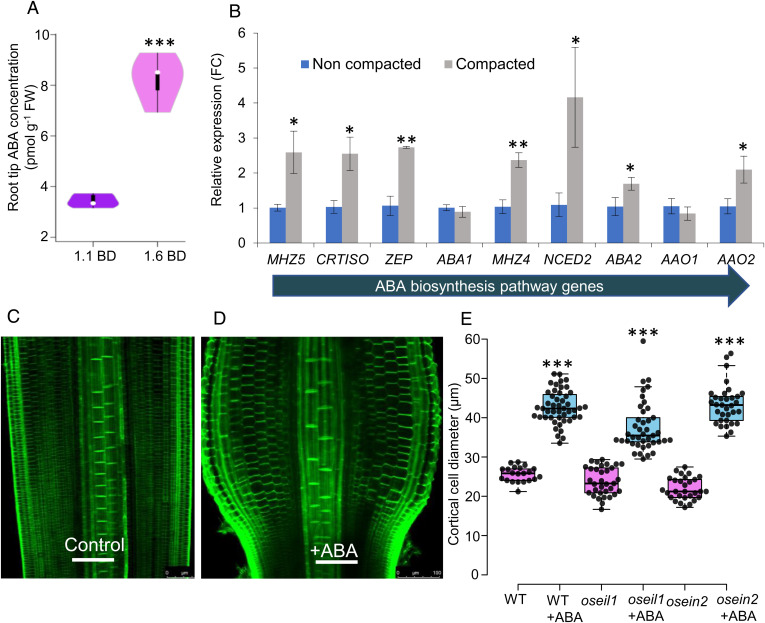Fig. 1.
Soil compaction enhances ABA biosynthesis and radial expansion of rice primary root cortical cells. (A) Violin plot showing ABA concentration in root tips of wild-type (cv. Nipponbare) grown in noncompacted (1.1 g cm−3 BD) and compacted (1.6 g cm−3 BD) soil. (B) Bar graph showing relative expression (in fold change, FC) of ABA biosynthetic genes in root tips grown in compacted as compared to noncompacted soil, n = 3 replicates. Horizontal arrow shows the direction in the pathway of genes encoding within the ABA biosynthetic pathway in rice. (C, D) Representative images of control and ABA-treated root tips (elongation zone) showing radial expansion of root cortical cells after ABA treatment (10 µM ABA for 24 h); green fluorescence represents staining with calcofluor dye. Scale bars represent 100 µm. (E) Quantitative box plot showing the radial expansion (diameter of cortical cells) of ABA-treated root tips of wild-type (WT), oseil1 and osein2 lines. *, **, and *** represent P values of ≤ 0.05, 0.01, and 0.001, respectively, calculated by Student’s t test between compacted and noncompacted treatments (A, B) and between genotypes with or without ABA treatment (E).

